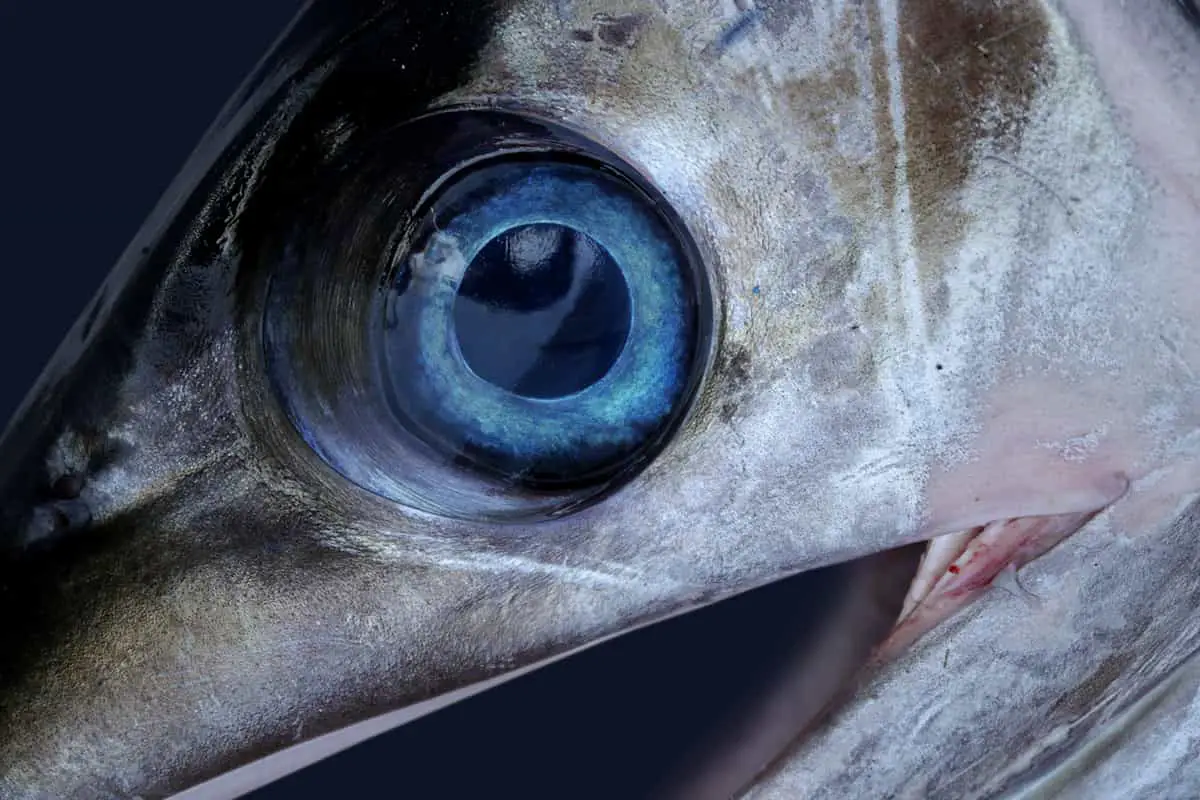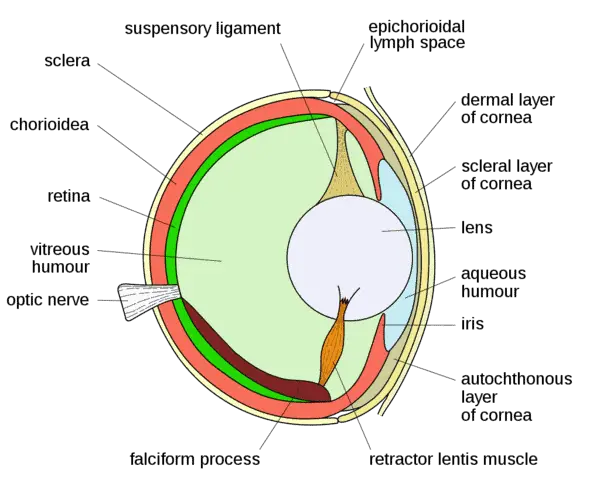How many anglers spend a lot of time optimizing their bait presentation to entice fish to bite once they see it. Anglers can play around with bait size, colours, and action, all in the hopes that a fish can see the bait. But, how good is a fish’s eyesight, to begin with?
Overall, fish have excellent vision. Beyond 500 feet away, fish can see motion and colour contrasts against the environment’s background colour rather than the actual details of the object. Fish are generally nearsighted and can see details of an object within 500 feet away.
A fish only being able to see about 500 ft away may not sound that impressive. Air is not good at transmitting sound, but it’s great for vision. This is why humans can see objects for miles away.
Water is excellent for transmitting sounds, but it’s horrible for vision. This is why many fish species are not farsighted, but they can detect motion and colour contrasts.

How Do Fish See?
All animals can see because their eyes can process the incoming light entering their eyes. The light in the eye is then converted into an electrical signal sent to our brains, creating the image of what we are seeing. Fish are no different but with one significant difference … the water.
Light entering a fish’s eye is converted into an electrical signal to the brain that gets converted into an image. However, water absorbs light and causes it to keep changing directions. Unlike human eyes, fish’s eye has evolved to capture as much light as possible in this environment.
This is why everything seems to be blurry if you’ve ever opened your eyes underwater with no goggles. It’s because the light keeps changing directions, and our eyes can’t capture the light in the same way fish can.
The Structure Of A Fish’s Eye?
You would think that if a fish’s eye could capture more light than ours, there would be a lot of differences in the eye’s anatomy. But the answer might shock you. The anatomy of a fish’s eye is very similar to ours and has many of the same components.
A fish’s eye has the following main components:
- A Cornea – Used as a protective coating to protect the eyes and help light enter the eyes.
- A Lens – Used to focus the light passing through the lens to hit the retina.
- An Iris – Used to adjust the pupil size adjusting the amount of light entering the eye.
- A Retina – Contains light-sensitive cells that take the focused light passing through the lens and send signals to the optic nerve.
- An Optic Nerve – Takes the retina signals and sends them to the brain, which processes the signal into an image.
Fish Eye Anatomy

Human Eye Anatomy

What Is A Fish’s Field Of Vision?
If you compare a fish’s eye to a human’s eye, one of the main differences you will see right off the bat is that a fish’s eye protrudes from its head. But does this allow them to have a greater field of vision?
Generally, fish can see 360° around their eye to create a panoramic view of their surroundings. However, because of their spherical eyes, most of what they see is out of focus unless they look right at it.
A fish’s wide field of view allows fish to detect possible food and predators. Because most of what fish see are not in focus, their ability to detect movement comes into play, which grabs their attention, causing them to look at something directly.
Can Fish See The Water or Air?
A common question that seems to get asked among novice anglers is can fish see the water they swim in or the air above the water?
Fish do not see water the same way we see water. To fish, the water is like air to humans. When we have foggy days is like fish having murky water.
When fish look up at the surface, it’s believed that fish can’t see the air, but they will see the interface between water and air. This is because the light entering the water changes direction and creates a blurry/flowy interface that the fish will see.
Do Fish See Colour?
There is a lot of focus behind what colours your lures and line should be to improve bait presentation, but is all this hype worth it? Can fish even see all the colours we do?
Fish can see colours underwater. In fact, they can even see the ultraviolet spectrum of colours that we can’t see. Their eyes have evolved over time to capture a broader range of colours than we do.
However, colours need light to appear, and water absorbs light. So what does this all mean?
If you use a red lure and drop it down to a depth of 100 feet, the lure will no longer appear red but will appear more of a dark gray / silhouette. But, if you drop down a blue lure at a depth of 100 feet, the lure will still appear blue.
Colours don’t act the same way in water as they do above the water. Air doesn’t absorb light as water does. As a result, red is always red, no matter where you are on the surface.
Happy fishing Tight Lines

